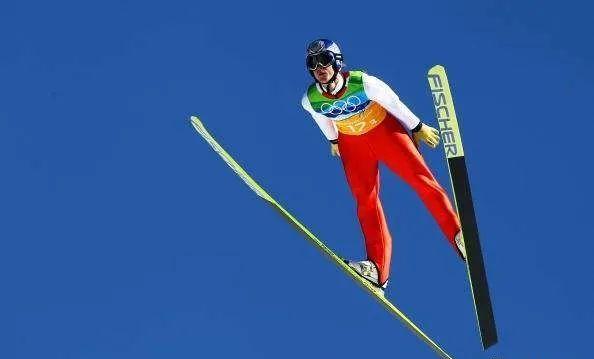During the ski jumping competition, the athlete wears a special ski with his feet, slides along the slope of the jump, uses speed and bouncing force to make the body fly along the parabola in the air, fly for about 4-5 seconds, fall on the landing slope, and continue to glide until the stop area stops. It mainly assesses the flight distance and action posture of the competition athletes, and has high requirements for speed, strength and technology.

At the Beijing Winter Olympics, there are five categories: (male/female) 90-meter standard platform, (men's) 120-meter big jump platform and (men's) team competition, of which the team event is a new competition, and 5 gold medals will be determined.
Ordinary people "jumping" from a height of more than ten meters is enough to cause serious damage, while ski jumpers jump from a height of eighty or ninety meters, or even a hundred meters, jump without any protection, fly in the air for up to a few seconds, and can still be unscathed after free fall in the vertical direction. Why?
Ski jumping is mainly divided into four stages, namely the skiing stage, the jumping stage, the flight stage and the landing stage.
In order to reduce the impact of air resistance, the athletes often adopt a crouching posture while extending their arms close to the body and extending backwards, all aimed at providing faster speed for the take-off stage.
Entering the take-off stage and the flight stage, the player's body leans forward, and the two skis are separated forward in a V-shape. On this basis, there are also athletes who have developed other postures on their own, with the aim of flying farther.
The landing stage is the most difficult and dangerous part of ski jumping, but the far mobilizers can often "turn the danger into a disaster".
▲Schematic diagram of ski jumping (Image source: Xinhua News Agency)
There are many reasons for this, one is because the ski jumping site is precisely calculated, and the trajectory at the time of landing basically coincides with the parabolic trajectory when the athlete falls, thus reducing injury. If it falls directly from the air, the hard ground will immediately reduce the speed to zero, and the force of this violent deceleration is unevenly distributed on the body and will cause great harm to the human body. But landing on the ramp, while not too slow, changes in speed much more slowly for skiers.
Second, in terms of equipment, in order to reduce the degree of damage caused by the fall, the material of the ski suit is generally synthetic fiber, and the lining is also equipped with foam to cushion the impact of the ground. The maximum width of the ski is 11.5 cm, and the length is generally 1.46 times the height, which provides a good guarantee for stability when landing.
Ski clothes for high-altitude skiing are generally made of synthetic fiber materials, and the thickness cannot exceed 6 mm at most and the thinnest cannot be less than 4 mm. Ski jumping costumes are thickened at the knees, hips, and elbows (Source: Xinhua News Agency)
▲Ski jumping skis are wider and longer than alpine skiing and cross-country skiing, so that they can better use the wind to slide farther in the air (Image source: Xinhua News Agency)
▲Special gloves for high-altitude skiing (Image source: Xinhua News Agency)
▲High-altitude ski helmet (Image source: Xinhua News Agency)
▲High-speed ski special ski shoes are made of leather, good flexibility, can protect the ankle, while ski shoes also need to have a higher waist, the waist of the shoe leans forward, must not hinder the athletes from jumping (Image source: Xinhua News Agency)
Third, athletes must master super skills. Ski jumping is a four-part technical action of ski jumping, jumping, aerial flight and landing, each of which is crucial. Among them, air flight has high requirements for athletes' balance and control. After professional training, the flexibility and coordination of the athlete's body are better than ordinary people, and they have mastered a large number of ice and snow sports skills. During the flight, athletes can reduce wind resistance through the "V" shaped posture, raise the body to a higher height, and also control the balance of the body by swinging the arm. When landing, the athlete's body weight falls on two feet, the legs are bent on the knees for cushioning, and the arms are extended from side to side to maintain body balance.
Based on the above factors, athletes can "jump" on the 100-meter platform without injury.
Image source: Xinhua News Agency
————————————————————————
Organizer: Hebei Provincial Sports Bureau
Producer: Guo Lijun
Editor's proofreading: He Wanxuan